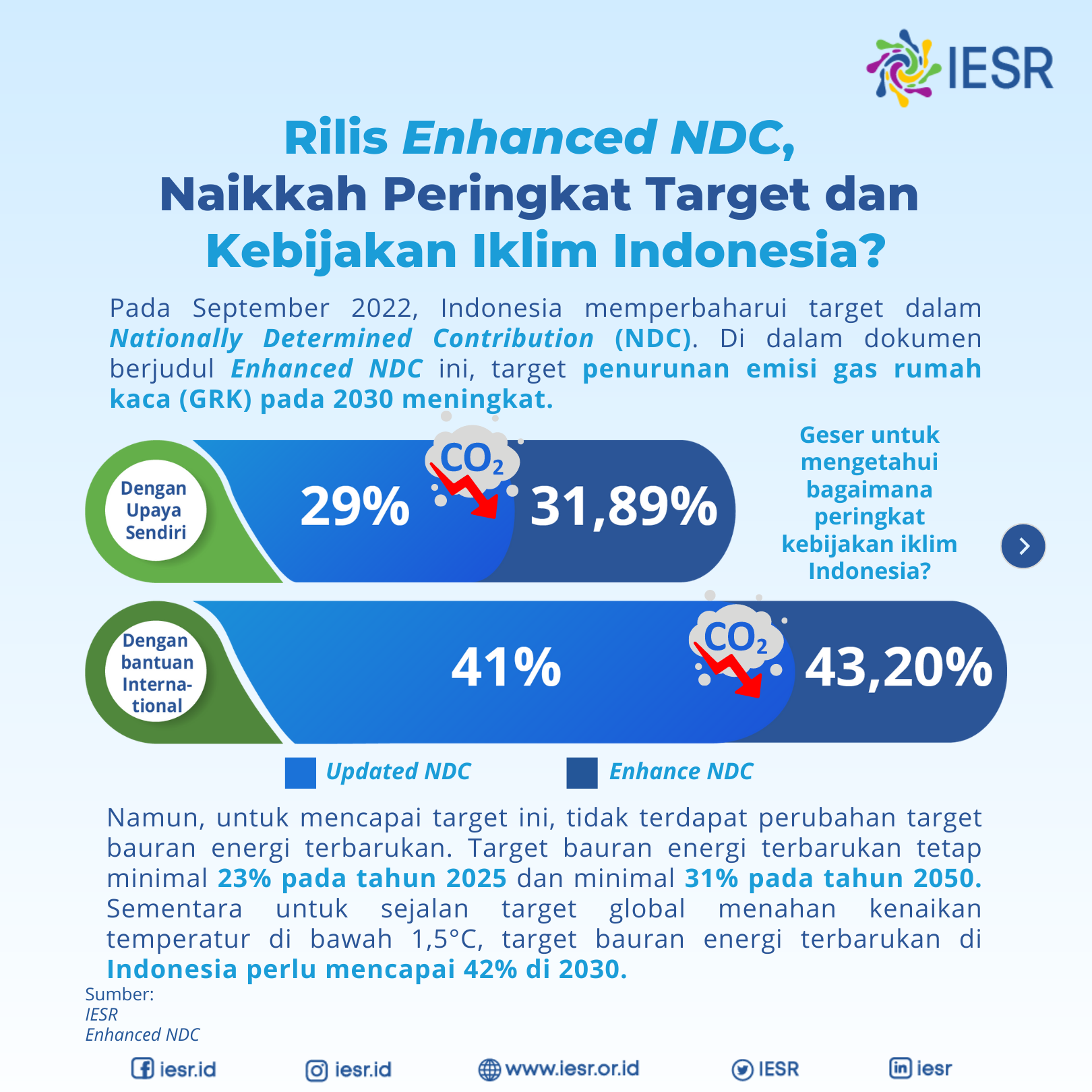Greening the grid and what it takes
Seminar Nasional Politeknik APP Jakarta 2023
November 23, 2023
Today

Krisna ‘Imed’ Gupta:
Read this paper at
Today
The recent development
Model setting
Results & discussions
conclusions
Introduction

Indonesia recent NDCs vow to reduce emissions by 31.9% (CM1) and 43.2% (CM2)1 in 2030, net-zero emission (NZE) in 2050.
From those, energy emission must reduced by 12.5% and 15.5% respectively.
Financing will be a challenge, as it requires 3,500 Trilion IDR
Electric power!
Electrification is central to the Indonesian effort toward the climate goals:
- EVs, induction stove(Resosudarmo, Rezki, and Effendi 2023).
Grid is very coal dominated, but that’s cuz it’s cheap(Burke et al. 2019).
Transitioning will be costly, but electricity price will also go up.
May impact the already low energy consumptions.
Transportation still dominates for now
electricity generation grows fast
Per-capita basis? Still very low
Electricity growth is fueled by coal
The targets
According to Resosudarmo, Rezki, and Effendi (2023), MEMR (2020b), MEMR (2020a) and MoEF (2021) Lolla and Yang (2021):
52% total PLN’s electricity by renewables in 2030.
In 2040, no more coal: full renewable electricity.
In 2030, 64% electricity will be generated by Independent Power Producers (IPP)
Lots and lots of EV and induction stoves.
The PLN

Indonesian electricity sector is heavily regulated and PLN is the sole distributor.
Prices are layered with household (44.78% of total consumers) typically pays the least, followed, industries (31.4%), business (17.25%), and then the government (6.57%) (PLN 2021).
Renewable is still very small, dominated by Hydro (11TWh), Geothermal (4TWh), and very little solar (5GWh).
PLN can’t increase price & must cut subsidy. Thus, rely on coal.
The IPP
Independen Power Producers (IPPs) will play a bigger role:
- now 36.79%, in 2030 will be 64% (MEMR 2020b)
Growth of renewable mainly comes from IPP solar and HH rooftop: of total 225MW solar capacity, only 9% is PLN-owned.
PLN cannot freely switch prices: it cannot increase price to consumers who buys electricity from expensive producers.
Uncertainty on land use and procurement are problems.
The Carbon market
The Indonesian government leads the effort with the creation of Emission Trading System (ETS).
The government will set a carbon cap to polluters. If a firm needs to pollute more than the cap, they must purchase permit from firms which pollute less or got taxed.
In a perfectly functioning market, this is efficient. Govt can also reduce cap each year little by little.
The price at the moment is hovering around 60-70k IDR/kgCO2 (around 4USD). Compare with foreigners? Still too cheap.
Simulation
What if NDCs are met?
How much emission can we reduce, how much electricity is going to cost under different scenarios.
Should we retire coal? Or should we keep using coal but retire everything else and speed up renewables?
I use linear system by first assume a perfect substitution between 3 sources of energy: renewables, coal, and other fossil fuels.
Model setting
Let p⋅w be a total cost of generating electricity (in Watt hour) from 3 sources: clean (wa), coal (wb), and less carbon-y fossil fuels (wg)
We add emission constraint to this standard cost minimization problem with a,b,g= emission factor of its respective energy source
We then get a completely linear system:
minW p⋅wsubject to wa+wb+wg≥ωawa+bwb+gwg≤εwa,wb,wg≥0
Model setting
Cost optimization allows for a compensating variation calculatin (Cowell 2006).
Perfect substitution have important implications:
Perfect changes in electricity mix reflects a longer run scenario.
The cost of substitution isn’t reflected by the model.
Short-run constraint can be modeled by setting boundaries on the possible solution.
Parameterization
Scenarios
| case | description | model setting |
|---|---|---|
| 1 | status quo | restricting the current share of generation. |
| 2 | current emission, optimized | case 1 without source restriction. |
| 3 | carbon tax | Same emission limit but with a carbon tax |
| 4 | CM1 | same prices but a 12.5% emission reduction |
| 5 | CM2 | same prices but a 15.5% emission reduction |
| 6 | New RUPTL | case 2 with 52% renewables |
| 7 | Zero coal | case 2 with 0% coal |
| 8 | Fully renewable | case 2 with 100% renewables |
Results

Results
| case | cost (IDR/KWh) | emission (TCO2) | clean (%) | coal (%) | others (%) |
|---|---|---|---|---|---|
| 1 | 906.11 | 225,208,103 | 17 | 60 | 23 |
| 2 | 819.96 | 225,208,103 | 24.67 | 75.33 | 0 |
| 3 | 1,071.53 | 225,208,103 | 24.67 | 75.33 | 0 |
| 4 | 902.63 | 190,277,276 | 38.07 | 61.93 | 0 |
| 5 | 918.07 | 183,753,484 | 40.58 | 59.42 | 0 |
| 6 | 988.49 | 153,998,343 | 52 | 48 | 0 |
| 7 | 1,247.93 | 202,629,399 | 0 | 0 | 100 |
| 8 | 1,284,44 | 28,947,057 | 100 | 0 | 0 |
Discussions
Corner solution toward coal corroborate Indonesia’s reliance on coal.
Case 3: 50% increase in price -> 18.26% total cost, trivial emission reduction.
Carbon quota (CM1,CM2) increase cost less than carbon tax.
0 coal → 37.72% extra cost, 100% renewable → 41.75%
Note this does not account for the transition cost.
Discussions
Coal is central to cost reduction (and reliability). It may be hard to retire coal.
- caveat: parameter-sensitive
Updated parameter is important: can the price of solar go lower in the future?
Since PLN is slow, enabling IPP will be key:
- Barriers for them include uncertainty on procurement and the use of TKDN.
Floating PV may be a partial solution to lower renewable cost.
Carbon market is only as efficient as its institution. Can it endure the test of time?
Conclusions
It is shown that greening the grid is central to achieve Indonesia’s NDCs
Given vast majority of its users are HH and industry, rising cost can be a huge problem.
A linear substitution model shows electricity prices can potentially rise to more than 37%
Early-retiring coal may be too ambitious, and enabling IPPs to grow renewable is necessary.
References
Comments and Questions are welcomed
